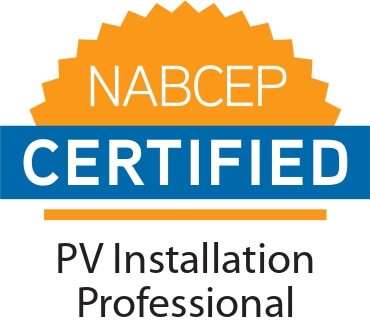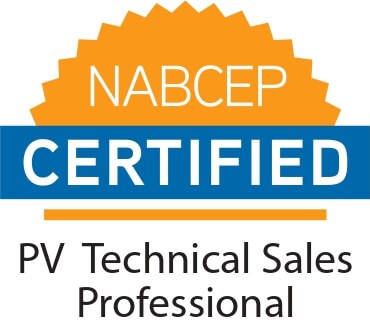Straight answers many solar companies won’t give you
This is one of the hardest and most important decisions you’ll have to make in buying a solar system. Here are four ways to make choosing the right installer easier:
- Get multiple quotes, even if you’re in a solar co-op area.
- Read the quotes thoroughly, compare them, ask questions, and insist on clear answers.
- Go online to check each installer’s licenses, certifications and credentials.
- Talk to customers who bought the same type of system you’re considering – roof, ground mount, battery backup, off-grid, etc.
A solar system is a big investment. These four steps will help it pay off in dependability and safety. So will learning more here, here, and here.
No, they’re not, for three reasons:
First, they’re missing many components you need for a safe, complete, code-compliant solar system. Buying those, and hiring a qualified professional to install them, will increase your short-term cost substantially.
Second, most components they do include are cheap, poorly made and low on performance and durability. This can cost you long-term.
Third, one generic kit made to fit all buildings won’t necessarily fit your roof’s type, material, pitch, truss or rafter composition and spans, etc. “One size fits all” generally doesn’t.
Adding batteries to most existing systems shouldn’t be a problem. But with the wrong choice of batteries, it can be.
While some batteries are built to produce electricity afor days, others can only hold their charge overnight, which defeats the whole purpose of having backup power. Others don’t work with net metering, so you can’t reduce electricity bills by selling excess power back to the electric utility. And some types of lithium batteries have a history of safety recalls.
The configuration we’d likely use is called AC Coupling, and it’s fully compatible with all kinds of systems from micro inverters like Enphase to string inverters like SMA. The technical working of this connection is pretty far into the weeds, but we’d be happy to discuss and provide a quote to anyone interested.
All solar panels are UL® certified and tested to withstand hail, hurricane-force winds, rainstorms and other kinds of severe weather.
The Panasonic and REC modules we install are not only among the world’s most powerful and efficient, but also, arguably, the most reliable. As West Virginia’s only Authorized Panasonic Installer, and as an Authorized REC Installer, we can install them with warranties that cover not only parts replacement, but also shipping and labor, and are good for as long as 25 years. The warranties wouldn’t last that long if the panels didn’t; (Claims rates average less than 0.1%)
Just keep them relatively clean. In most areas, rain does that.
You can, but you’d likely do better leaving it in place, where it will increase your home’s resale value.
There are tradeoffs either way.
When you lease, your initial outlay may be lower, but you’ll give up federal tax credits and state incentives and grants that could put tens of thousands of dollars into your pocket. You could also be giving up hundreds or thousands of dollars a year in Solar Renewable Energy Credits (which also vary from state to state) that solar system owners earn by selling credits for power produced to the electric utilities.
If you own your solar system, it adds substantially to your home’s value and potential selling price. But if you sell your home before a solar lease is up, the added monthly payments could deter potential buyers.
Overall, with the low interest bank financing available, we encourage customers to carefully review all options before committing to a lease agreement. In almost all cases, we feel that buying and owning is a much better deal than leasing.
For a basic roof-mounted residential system, six to eight weeks overall from signed contract is typical. Most of that time is for ordering the components, shipping from the manufacturers and distributors, and filing for and obtaining all the required permits, and utility interconnect documents. Installing the system itself takes only one to three days. Ground installations take a little longer. Large commercial, municipal and agricultural systems obviously require much more time. Either way, as a Milestone Solar customer, you receive a specific detailed schedule – one that we live up to.
This is one of the hardest and most important decisions you’ll have to make in buying a solar system. Here are four ways to make choosing the right installer easier:
- Get multiple quotes, even if you’re in a solar co-op area.
- Read the quotes thoroughly, compare them, ask questions, and insist on clear answers.
- Go online to check each installer’s licenses, certifications and credentials.
- Talk to customers who bought the same type of system you’re considering – roof, ground mount, battery backup, off-grid, etc.
A solar system is a big investment. These four steps will help it pay off in dependability and safety. So will learning more here, here, and here.
No, they’re not, for three reasons:
First, they’re missing many components you need for a safe, complete, code-compliant solar system. Buying those, and hiring a qualified professional to install them, will increase your short-term cost substantially.
Second, most components they do include are cheap, poorly made and low on performance and durability. This can cost you long-term.
Third, one generic kit made to fit all buildings won’t necessarily fit your roof’s type, material, pitch, truss or rafter composition and spans, etc. “One size fits all” generally doesn’t. For specifics, click here.
Adding batteries to most existing systems shouldn’t be a problem. But with the wrong choice of batteries, it can be.
While some batteries are built to produce electricity afor days, others can only hold their charge overnight, which defeats the whole purpose of having backup power. Others don’t work with net metering, so you can’t reduce electricity bills by selling excess power back to the electric utility. And some types of lithium batteries have a history of safety recalls.
The configuration we’d likely use is called AC Coupling, and it’s fully compatible with all kinds of systems from micro inverters like Enphase to string inverters like SMA. The technical working of this connection is pretty far into the weeds, but we’d be happy to discuss and provide a quote to anyone interested.
All solar panels are UL® certified and tested to withstand hail, hurricane-force winds, rainstorms and other kinds of severe weather.
The Panasonic and REC modules we install are not only among the world’s most powerful and efficient, but also, arguably, the most reliable. As West Virginia’s only Authorized Panasonic Installer, and as an Authorized REC Installer, we can install them with warranties that cover not only parts replacement, but also shipping and labor, and are good for as long as 25 years. The warranties wouldn’t last that long if the panels didn’t; (Claims rates average less than 0.1%)
Just keep them relatively clean. In most areas, rain does that.
You can, but you’d likely do better leaving it in place, where it will increase your home’s resale value.
There are tradeoffs either way.
When you lease, your initial outlay may be lower, but you’ll give up federal tax credits and state incentives and grants that could put tens of thousands of dollars into your pocket. You could also be giving up hundreds or thousands of dollars a year in Solar Renewable Energy Credits (which also vary from state to state) that solar system owners earn by selling credits for power produced to the electric utilities.
If you own your solar system, it adds substantially to your home’s value and potential selling price. But if you sell your home before a solar lease is up, the added monthly payments could deter potential buyers.
Overall, with the low interest bank financing available, we encourage customers to carefully review all options before committing to a lease agreement. In almost all cases, we feel that buying and owning is a much better deal than leasing.
For a basic roof-mounted residential system, six to eight weeks overall from signed contract is typical. Most of that time is for ordering the components, shipping from the manufacturers and distributors, and filing for and obtaining all the required permits, and utility interconnect documents. Installing the system itself takes only one to three days. Ground installations take a little longer. Large commercial, municipal and agricultural systems obviously require much more time. Either way, as a Milestone Solar customer, you receive a specific detailed schedule – one that we live up to.



